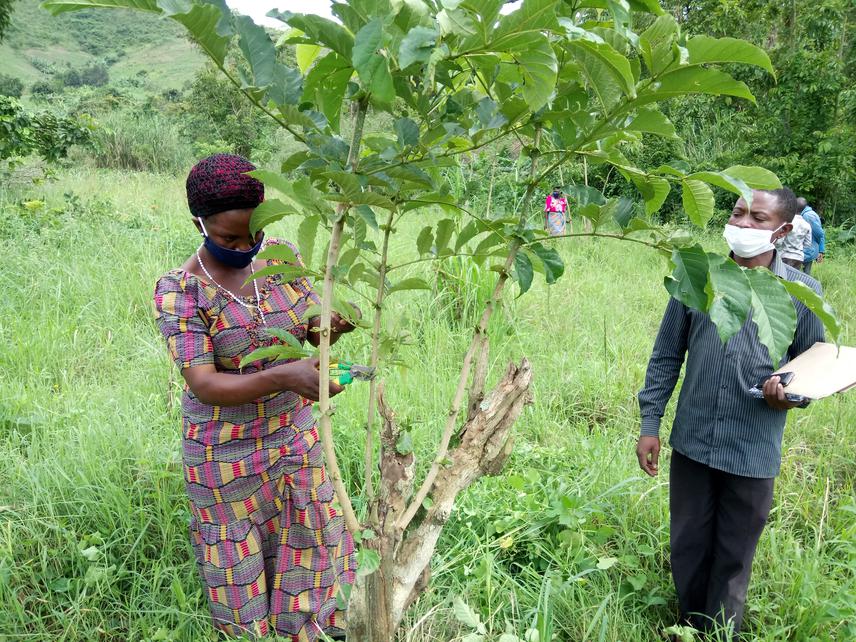Jjemba Bonny
Other projects
7 Jul 2022
Enrichment Planting to Supplement Farmer-Managed Natural Regeneration in Biodiversity Restoration on Farmlands of Gogonya Village, Mubende District, Uganda
The overall aim of the project is to increase the awareness of farmers about the technique of farmer-managed natural regeneration and improve their skills in its application to promote biodiversity conservation and increase their livelihood resilience to climate change.
The project is going to achieve two specific objectives as indicated below: -
• To sensitize 50 farmers from Gogonya Village about the role of farmer-managed natural regeneration in biodiversity conservation and their livelihood resilience to climate change
• To train 20 selected farmers from Gogonya Village on how to practice farmer-managed natural regeneration on their farms with special focus on regeneration of trees from live tree stumps

A farmer champion pruning shoots on a stump of Markhamia lutea under close supervision of the field assistant © by Jjemba (October, 2020)
Farmer-managed natural regeneration is the regeneration and management of trees and shrubs from stumps, roots or naturally growing seedlings on a farm (Rinaudo, 2007). This method has enriched many farming landscapes in Africa through a high diversity of native trees and shrubs and increasing soil fertility (Reij et al. 2009). This in-turn has improved the livelihood of subsistence farmers by raising their food security and resilience to climate change (Hertsgaad, 2011). With farmer-managed natural regeneration, farmers don’t need to buy tree planting materials because it relies on natural regeneration (Reij & Garrity, 2016). Therefore, farmer-managed natural regeneration is a cost-effective and environmentally friendly method of re-establishing trees on a farm.
In spite of the benefits mentioned above, farmer-managed natural regeneration is mostly promoted in the dry land zones of Africa and little or no attention is given to other agro-ecological regions. In 2019, I conducted a study on farmer-managed natural regeneration in Mubende District, Uganda and found-out that many farmers were still unaware about the technique, yet most parts of the District were experiencing rampant degradation of land due to deforestation, for instance, Gogonya Village. Regarding the problem, I identified a need to raise the awareness of farmers about the technique of farmer-managed natural regeneration and also improve their skills in its application on their farms to overcome the challenge of land degradation. Therefore, this project is aimed at addressing that gap.
Raising the awareness of farmers about farmer-managed natural regeneration will be done using audio-visual training method during a sensitization workshop in Gogonya Village. Sensitized farmers will act as messengers to other community members in the village and the District as a whole. Additionally, selected farmers will be trained on how to practice farmer-managed natural regeneration by conducting demonstrations on their farms. The trained farmers will become champions in the implementation of farmer-managed natural regeneration in the village and will be responsible for future training of other community members who develop interest in the technique.
The project interventions will result into sustainable management of land under agriculture and forestry in Gogonya Village. This will improve habitat for organisms dwelling in agro-ecosystems, hence conserving the native biodiversity. On the other hand, regenerated trees will generate products such as poles and fuel wood that will reduce pressure on the remaining natural forests in the area.